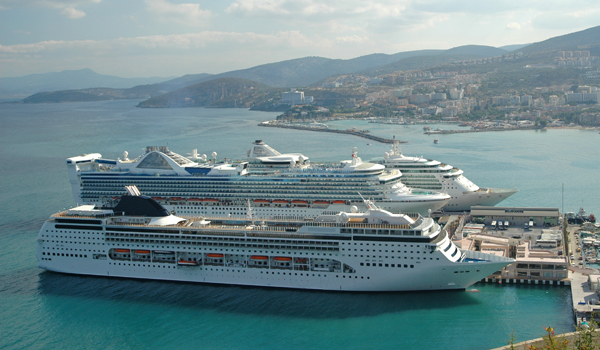How to Avoid a Nasty Virus on a Cruise Ship

Sharing a cabin with a sick person and not practicing good hygiene largely contributed to the spread of a diarrhea virus on a cruise ship in 2009, according to a new report.
Called norovirus, it is a common scourge of cruise ships, hospitals and nursing homes and causes severe diarrhea and vomiting. The virus can spread in food, water and from touching infected surfaces or people, the researchers said.
On this particular cruise, norovirus caused acute gastroenteritis in at least 15 percent of the passengers on the ship, said researcher Mary Wikswo, an epidemiologist at the Centers for Disease Control and Prevention. The CDC conducts an investigation into an illness when 3 percent or more of cruise passengers or crew members have gastrointestinal illness.
The report did not identify the cruise in question. In earlier reports, the CDC said 15 U.S. cruise ships had outbreaks of illness in 2009.
Even though norovirus is sometimes unavoidable, there are a number of things you can do to avoid infection, Wikswo said.
Here are some lessons learned from the 2009 outbreak:
Avoid traveling if you're ill.
Get the world’s most fascinating discoveries delivered straight to your inbox.
"If you go on a cruise and you think you're coming down with something, call the cruise and see if they can help you out [in rebooking another cruise] or recommend an alternative plan," Wikswo told MyHealthNewsDaily. "If you do become ill on a cruise ship, go to the infirmary and tell someone you're feeling ill."
The CDC also recommends asking your doctor before getting on the ship to see if he or she thinks you're well enough to sail.
Wash your hands ... a lot.
Norovirus is highly contagious , so it's important to continuously wash your hands on a cruise ship, Wikswo said.
"Especially being in close quarters on a cruise ship, washing hands can prevent a lot of illnesses," she said.
It's especially important to wash your hands after using the restroom and before eating to prevent norovirus spread, according to the CDC.
Avoid sharing spaces with an ill person.
Sometimes you have no say in whom you share a cabin with, but sharing the same space with a sick person was one of the top ways norovirus spread in the 2009 cruise-ship incident, Wikswo said. Having an ill roommate was associated with a nearly threefold increase in risk of illness, according to the report.
"Being in close proximity with someone who is ill means you're more likely to get ill, and that's been seen in many, many norovirus outbreaks," she said.
Because a cruise ship is a confined space , it's important to avoid places like stateroom decks or cafes where you know ill people will go, and to avoid physical contact, like handshakes and hugs) with people who are ill, she added.
In the report, norovirus attack rate was high among passengers who were exposed to the virus in the cafe (30.6 percent attack rate) or who witnessed vomiting during boarding periods (42.9 percent attack rate).
Make sure the cruise sanitation procedures are up to code.
Check out the inspection history of a cruise ship when you're shopping for your next vacation. Cruise ships are required to keep a log of passengers and staff who report symptoms of gastrointestinal sickness, according to the CDC.
Even though the cruise ship in the report implemented rigorous cleaning protocols, such as providing hand sanitizer and reminding passengers to wash their hands, there were small violations that could have contributed to the norovirus outbreak, Wikswo said.
Therefore, it's important for cruise staff to remember that the little things can count like making sure bathrooms are stocked with fresh paper towels when an outbreak is at stake, she said.
Pass it on: Wash your hands often and stay away from sick people to avoid being infected with norovirus on a cruise.
- Intimate Pat-Downs Raise Infection Risk at Airports
- Diarrhea: Causes, Symptoms & Treatments
- Are Cruise Ships a Health Risk?
Follow MyHealthNewsDaily staff writer Amanda Chan on Twitter @AmandaLChan.



